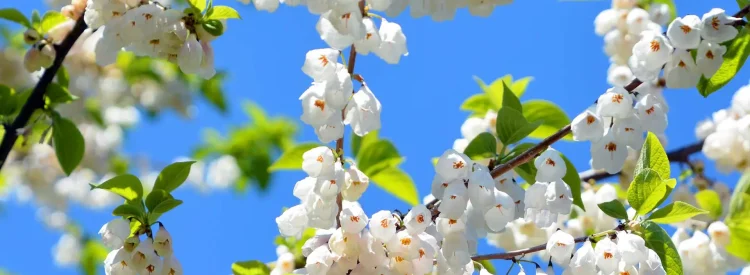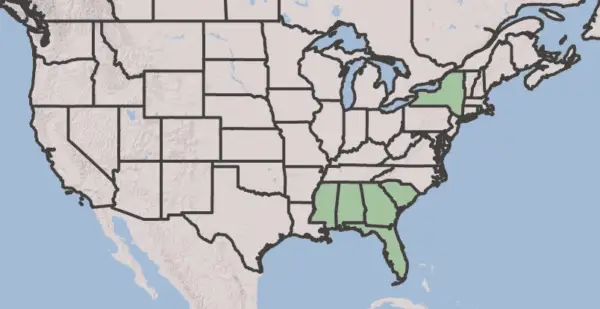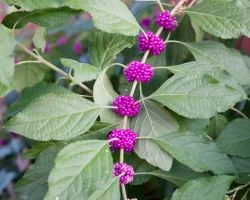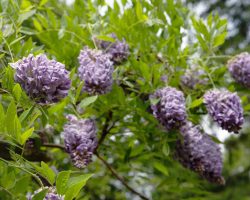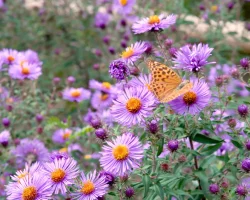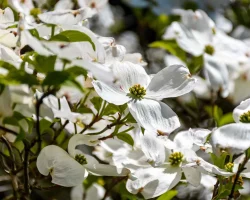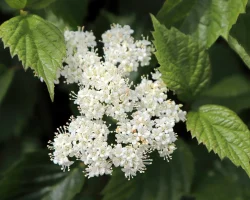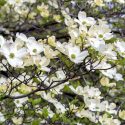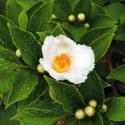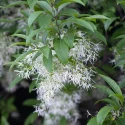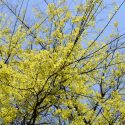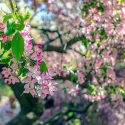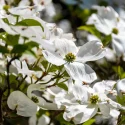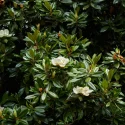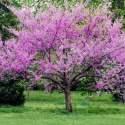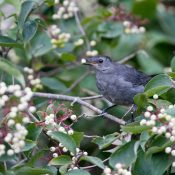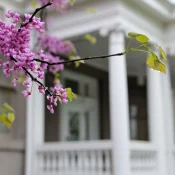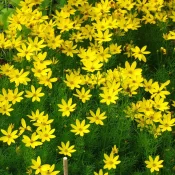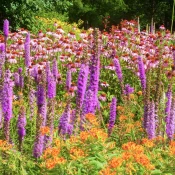Carolina silverbell is a stunning native tree that delivers major spring impact with minimal effort. In April and May, its branches are covered in delicate, white, bell-shaped flowers that dangle like ornaments—followed by bright green leaves and golden fall color. It’s a perfect statement tree for a front yard or a beautiful companion to taller oaks and pines. Carolina silverbells grow quickly, adapt to most soils, and require little to no pruning, making them ideal for beginning gardeners.
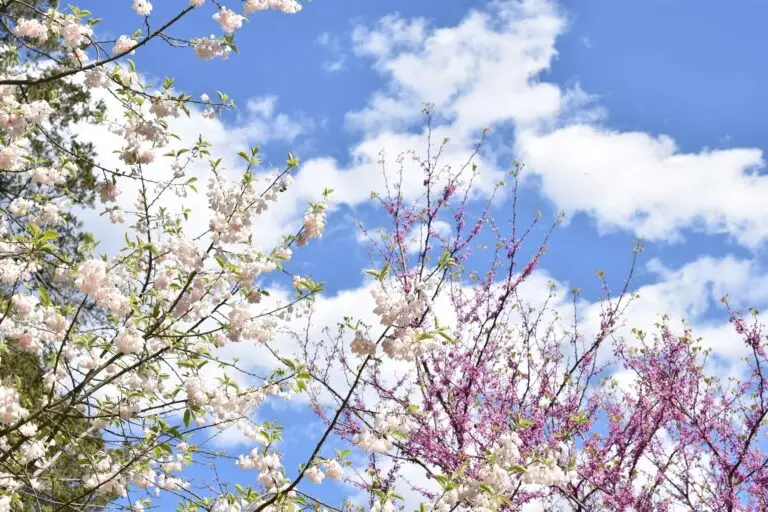
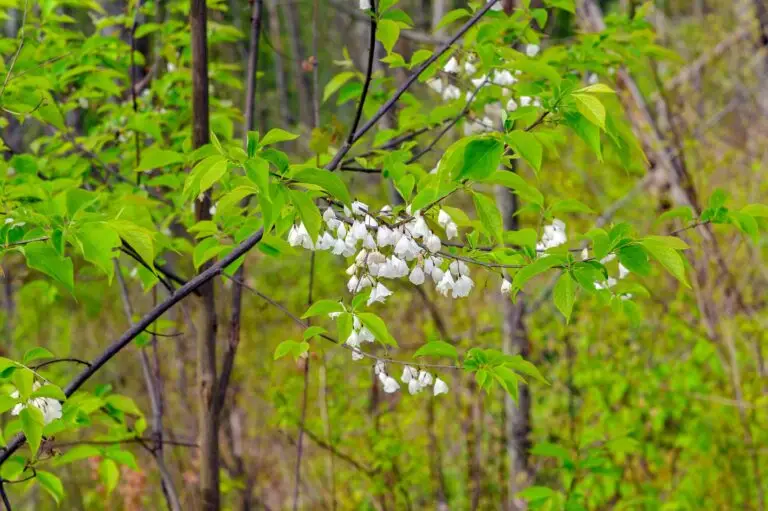
Why Carolina silverbell matters
Native trees like Carolina silverbell do more than add beauty—they bring life back to your yard. Their flowers feed pollinators, their leaves shelter caterpillars, and their branches provide bird nesting spots. Because they’ve adapted to local soil and weather for thousands of years, they thrive with little care and offer far more to wildlife than non-native ornamentals ever could.
Here’s why this one matters:
- Pollinator magnet: Its spring flowers are packed with nectar and pollen, supporting bees, butterflies, and early-season pollinators.
- Effortless elegance: Once established, it needs little care—no fertilizer, no frequent pruning.
- Native resilience: Thrives in everything from part shade to full sun and tolerates a variety of soils.
- Four-season beauty: White spring blooms, lush green summer leaves, and golden fall color—all in one tree.
Is Carolina silverbell a good choice for my yard?
Yes—if you want a low-maintenance native tree that still makes people stop and stare. Carolina silverbell is ideal for:
- Front yards or foundation plantings that need a statement tree
- Woodland-edge gardens with part-sun or filtered light
- Sunny or semi-shaded yards with well-drained soil
- Gardeners who want a native alternative to non-native dogwoods or cherries
Skip it if your space is extremely dry or exposed to harsh wind—silverbells prefer a little shelter and consistent moisture.
New to native?
Before lawns and landscaping, native plants were here. They’ve fed birds, bees, and butterflies for thousands of years—and they’ll do the same in your yard. The best part? They’re easier to grow than you think.
Where are Carolina silverbells native?
Carolina silverbell’s native range is—as you may guess—from South Carolina west to Arkansas, along with a surprising New York state! While this is their native range, you will find them in nurseries from New York south to Florida.
Where it shines in your yard
Carolina silverbell is the ultimate front-yard showpiece. Plant it near windows, patios, or walkways where you’ll see its spring bloom up close. It’s also perfect along woodland edges or as a small grove—three or five trees planted together create an unforgettable canopy of white bells in spring.
Silverbells pair beautifully with native azaleas, viburnums, and ferns below, creating layered structure and contrast. Its open branching habit lets dappled sunlight reach the ground, allowing understory wildflowers and shrubs to thrive.
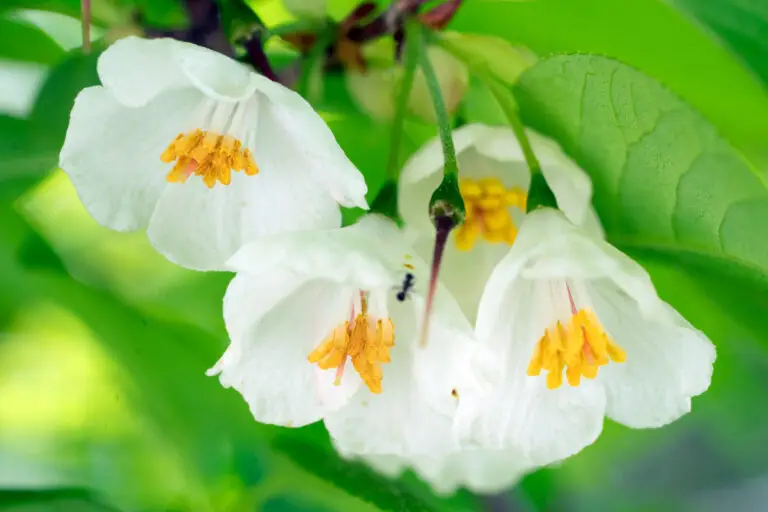
How to grow Carolina silverbell
This is a forgiving, adaptable native tree that rewards even beginner gardeners.
- Light: Full sun to part sun (blooms best with at least 4 hours of direct light)
- Soil: Prefers moist, well-drained soil; tolerates clay or loam
- Water: Water regularly the first year of establishment; after that, rainfall is usually enough
- Maintenance: No regular pruning needed—only shape if desired
- Growth rate: Moderate
- Lifespan: Long-lived; can thrive for decades
Pro tip: Mulch around the base with leaf litter or wood chips to mimic its natural woodland environment.
Carolina silverbell flowers are raincoats
The blooms hang upside-down, with the open part facing the ground. Botanically, that’s called nodding, and it helps protect pollen from rain—a clever adaptation for spring storms in the Southeast.
One more fun nerd fact about Carolina silverbells, which explains why they are rare at plant nurseries:
Carolina silverbell is notoriously tricky to propagate. Its seeds have deep dormancy that can take more than a year to break, and even tissue-cultured plants only thrive when cuttings are taken before or after their fastest growth phase — but not during it. This is one reason why it might be hard to find at plant nurseries—but here are some recs to find one!
Where can I buy Carolina silverbell?
Sadly, many native plants like Carolina silverbell can be challenging to find at conventional nurseries. But we are here to help! Here are four other ways to source this amazing native shrub:
Where can I find seeds and plants?
Finding native plants can be challenging (we partly blame Marie Antoinette.) To make it easier, we’ve assembled four sourcing ideas.
300+ native nurseries makes finding one a breeze
Explore 100+ native-friendly eCommerce sites
Every state and province has a native plant society; find yours
Online Communities
Local Facebook groups are a great plant source
What are other flowering native trees?
I’m so glad you asked! If you want to plant a garden in the sky, check out redbuds, tulip trees, Franklin trees, fringe trees, native dogwoods, and magnolias.
What are good pairings for Carolina silverbell?
There are so many native plants that are excellent pairings for Carolina silverbell and thrive in Southern, Mid-Atlantic, and Northeast gardens. Some excellent companions include:
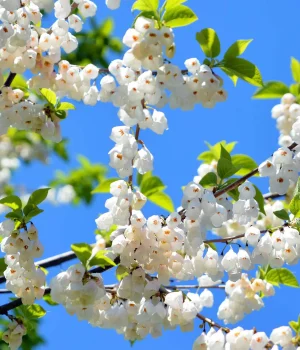
Pairs well with
Carolina silverbell is a forgotten native treasure that deserves high visibility in our yards and landscapes—they are especially great in front yards. Its carefree planting needs and four-season beauty make it a no-brainer for anyone living in the South, Mid-Atlantic, or lower Northeast. You may have to call around to local nurseries to find one, but it is well worth the effort. Visit our Best Native Trees for Front Yards for more iconic inspo. Happy planting!
Sources
- Brand, Mark H., and R. Daniel Lineberger. “In Vitro Propagation of Halesia Carolina L. And the Influence of Explantation Timing on Initial Shoot Proliferation.” Plant Cell, Tissue and Organ Culture 7, no. 2 (1986): 103–13. https://doi.org/10.1007/bf00043034.
- Candeias, Matt. “What’s the Deal with Nodding Flowers?” In Defense of Plants, July 23, 2020. https://www.indefenseofplants.com/blog/2020/7/22/whats-the-deal-with-nodding-flowers.
- Nelson, Gil. Best Native Plants for Southern Gardens: A Handbook for Gardeners, Homeowners, and Professionals, (2010).
- Taylor, Patricia A. Easy Care Native Plants: A Guide to Selecting and Using Beautiful American Flowers, Shrubs, and Trees in Gardens and Landscapes. (1996), 125.
- USDA, Carolina Silverbell
What if your feed was actually good for your mental health?
Give your algorithm a breath of fresh air and follow us.
